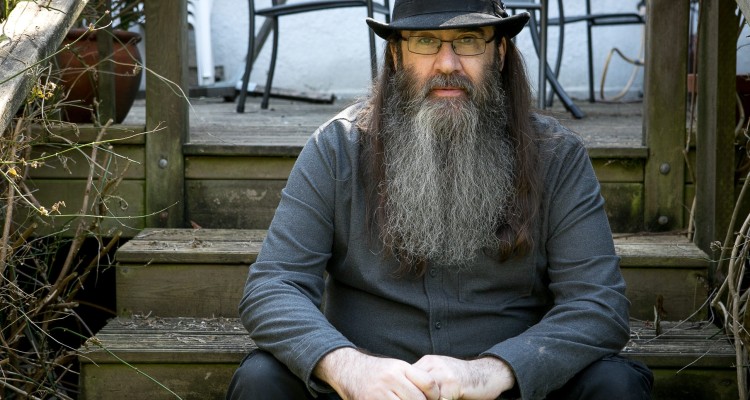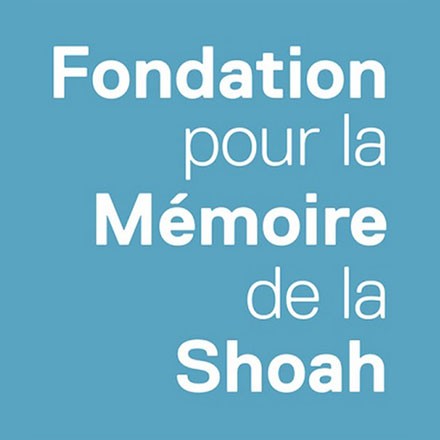Anna Freud, Freud’s daughter, said that her grandmother was ‘devoted to and proud of her [son], as Jewish mothers are’. The fact is that this mother, Amalia, a superstitious Galician who spoke mostly Yiddish, had predicted that her Sigmund, on whom she projected her dreams of greatness, would become a great man. But who was the mother of the founder of psychoanalysis? And, by the way, how many mothers did he have? Joel Whitebook, the author of an intellectual biography of Freud[1], challenges this myth of the “good, loving mother” that Amalia would have been. K. publishes this week the first part of his analysis of Freud’s relationship to his mother figures. Next week we will meet Freud’s second mother, his Catholic “nannie”, old and ugly, but no less important for the young Freud in the midst of his sexual curiosity…
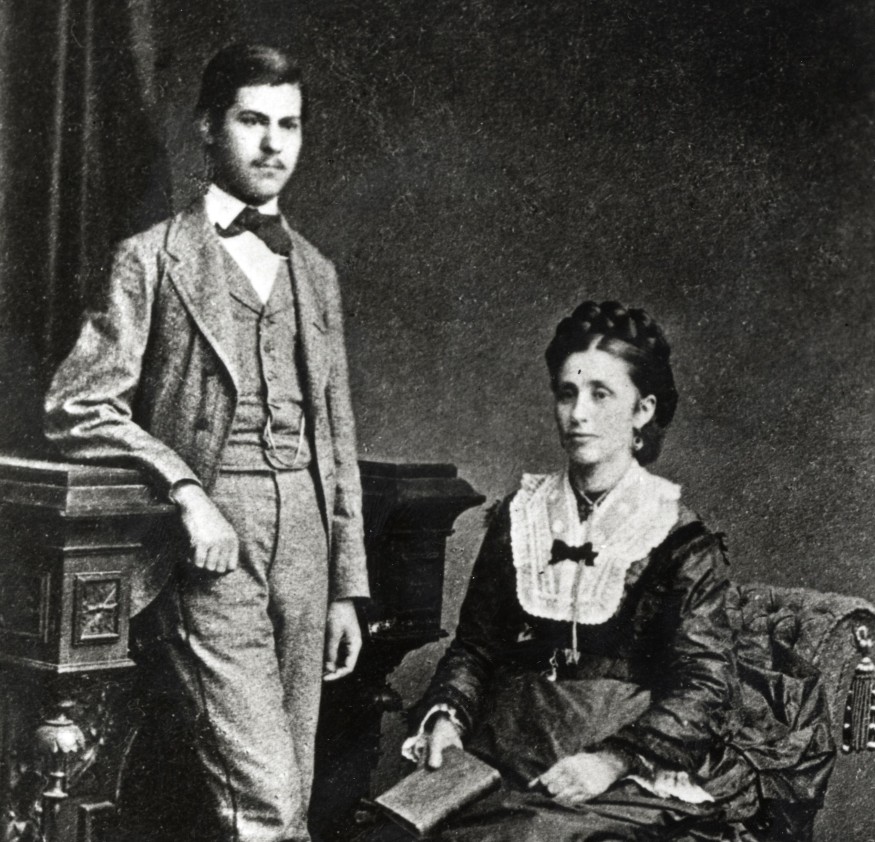
Introduction
Does psychoanalysis still have something to tell us about the evolution of contemporary societies? Can we still draw intellectual resources from it to understand ourselves and what is happening? Psychoanalysis has declined from being a major critical science in the 1960s and 1970s – if we think only of the worldwide success of Marcuse or the centrality of Lacan for the development of critical thought – to become a private affair. Certainly, the discipline remains the most sophisticated among the techniques that take care of the wounded souls of the contemporary world, but it has not preserved its status as a human science capable of enlightening us, collectively, about our present. Freud, no matter how concerned he was about the well-being of his patients, forever aimed higher. When he discovered obsessive neurosis, he saw in it an effect of the transformations of the injunction to autonomy in the modern world – exhortations that individuals manage as much as they can and sometimes do not manage. When he speaks of “civilization and its discontents,” when he analyzed the phenomena of the formation of possibly-murderous crowds, he certainly started from the individual subject and his sufferings, but did so in order to elucidate the contemporary world.
Joel Whitebook, a philosopher and psychoanalyst born in Los Angeles in 1947 and raised in a secular-liberal Jewish family, is one of the few psychoanalysts who still pursue this project. Currently a professor at the Center for Psychoanalytic Training and Research at Columbia University, and a private clinician, he is the principal naysayer of theories that seek to confine psychoanalysis to an exclusive concern with the individual. He engages this contrarian approach not to keep the field pure of any political commitment, but to counter attempts to tame it, to make of psychoanalysis yet another theory of the human being who goes wrong because he lacks empathy, benevolence, recognition or even the possibility of saying what he feels. Because the individual in psychoanalysis is more complex. Vacillating between love and hate, fragile as well as grandiose, destructive and creative, distressed and all-powerful, this is the complicated human being with whom analysis deals and whose “bad tendencies” it neither judges nor tries to “fix” or correct.
It is in this spirit of openness that Joel Whitebook has written a portrait of Freud’s relationship to the maternal figure. Between his Galician Jewish mother, a source of vitality as much as of self-hatred, and a terrifying Catholic nanny who initiated him into a sensuality fraught with ambiguity, we discover a little Schlomo jostled by life who tries to do the best he can. But we also discover the sources of the deep structure of the adult Freud, of this giant of thought for whom only one continent remained virgin: the woman, femininity, this passivity hated by Freud from which he looks away like Moses facing God. Terror and faith in the law also meet in Freud. So much so that on reading Whitebook one wonders if psychoanalysis is not also a “Jewish science” (Yerushalmi) by matrilineal inheritance. – Julia Christ.

The Myth of “Mein goldener Sigi”
The picture of Amalie as a young, beautiful, and animated mother who unambivalently adored her ‘goldener Sigi’ is to a large degree a myth – a defensive idealization, first promulgated by Freud, and then uncritically continued by many of his followers. By almost all accounts Amalie was a difficult woman: infantile, dependent, demanding, and self-centered. Although she was beautiful, lively, sociable, and an efficient housekeeper, she was anything but a loving wife and mother. Borrowing from the “vulture imagery” that appears at several key places in Freud’s work, the historian of psychoanalysis Paul Roazen observes that she was “a tough old bird.”[1] And Judith Heller Bernays, Freud’s niece from New York, who visited Vienna regularly, confirms this assessment. She emphasizes the selfish and tyrannical personality that lay behind the “charming and smiling” performance that her grandmother put on for strangers.[2] For Heller, her grandmother’s insensitivity was exemplified by the way she deployed deafness to avoid dealing with anything “that might require her to bestow an extra measure of sympathy or consolation upon some member of the family.” For example, when one of her granddaughters died at the age of twenty-three, Amalie ignored what must have been the distressed atmosphere in the household and simply acted as if nothing had happened. Despite the fact that “this granddaughter had visited her frequently in the past,” Amalie never mentioned the tragic death, even when the girl’s mother came to the house.[3] As Rizzuto summarizes the situation, Amalie “was especially incapable of attending to their emotional pain. She offered no consolation or protection. Instead, she demanded to be protected from any knowledge that might cause her any pain or remove her from center stage.”[4]

Freud’s son Martin, who also describes Amalie as a selfish and aggravating woman, adds a socio-cultural dimension to his assessment of her. The “Galician Jews,” Martin notes, “were a peculiar race, not only different from any other races inhabiting Europe, but absolutely different from Jews who had lived in the West for some generations.” These Ostjuden, he continues, “had little grace and no manners; and their women were certainly not what we should call ‘ladies’. They were highly emotional and easily carried away by their feelings.” As a “true representative of her race,” Amalie – who it seems never learned German but continued to speak Yiddish her entire life – was “not easy to live with.” When she was “unsettled and disturbed,” she would not hide her feelings to protect “the peace of those around them.” On the contrary, Amalie had no difficulty directly discharging her volatile emotions when they seized her. It would be mistaken, however, to think that Martin’s portrait of his grandmother simply reflects the prejudices of an assimilated German-speaking Jew – a “Yekke,” as Ostjuden derisively refer to them – residing in England. Martin also expresses deep admiration for the vitality and tenacity of his Eastern European brethren: “Although in many respects” Galician Jews “would seem to be untamed barbarians to more civilized people, they, alone of all minorities, stood up against the Nazis. It was men of Amalie’s race who fought the German army on the ruins of Warsaw.”[5] It is safe to assume that Freud’s pugnacity – as well as his superstitiousness and gullibility, which is so unexpected in a champion of reason like Freud – was partly inherited from has head- strong, spirited, and irrational Galician mother.
In a remark that is not meant to be altogether positive, Freud’s daughter Anna Freud observes that her grandmother was “devoted to and proud of her [son], as Jewish mothers are.”[6] The implicit criticism is that, behind its self-sacrificing façade, proverbial Jewish mother-love typically contains a sizeable dose of narcissism. Although Amalie kept her daughter Dolfi imprisoned at home to take care of her, she did not attempt the same strategy with Sigmund. As “a highly narcissistic and socially ambitious person who placed all her hopes on her first-born son,” Rizzuto observes, she needed him out in the world to slay dragons so that she could revel “in his glory.” Indeed, Amalie continued to express “her sense of owner- ship over” her son “privately and publicly, even when he was an elderly man.”[7] Commenting on Anna’s description of the relationship, Rizzuto notes, “The fact that Amalie enjoyed ‘petting and making a fuss over’ [Freud] did not make him less ‘terrified’ of this overbearing, emotionally exhausting, willful mother, a mother who could see herself in her children but could not see them in their own right.”[8] Freud’s reported feeling that he was unlovable, which helped to create the more vulnerable parts of his self, must have stemmed in part from the sense that his mother loved him not for his own sake but as a “narcissistic object.” As a dutiful son who, in Anna’s view, “suffered his mother” rather than being “dependent on her,” Freud visited Amalie’s house every Sunday afternoon for lunch. Because of his ambivalence, however, he invariably arrived late. Prior to the Sunday visits, the anxiety he experienced often caused him gastro-intestinal distress, and he would procrastinate at Berggasse 19 while Amalie nervously paced the floor in anticipation of his arrival.
A volatile and self-centered mother, however, does not of itself make for a traumatic childhood. There was something more – namely, maternal depression that was caused by the many losses that Amalie experienced in rapid succession. Even before Sigmund’s birth, the family had suffered several painful deaths.
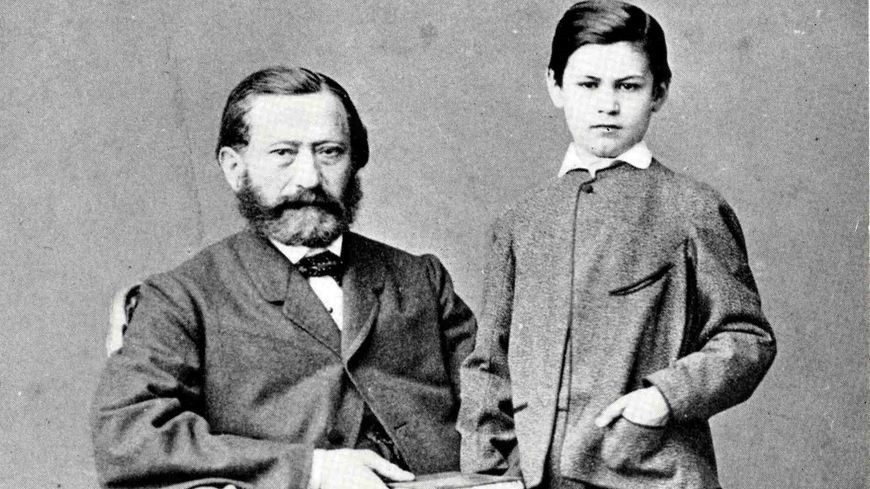
Jacob had lost at least one – perhaps two – wives, and his father Schlomo died shortly before the child was born. Furthermore, these deaths were “followed during the next years by a series of losses that would have a powerful traumatic effect on the young boy.”[9] Amalie’s brother Julius died a month before the birth of her second son who would bear his name. But the most catastrophic loss was surely the death of that boy himself, the younger Julius, who was born when Sigmund was eleven months old and died six to eight months later. There is good reason to assume that Amalie became depressed, withdrawn, and psychologically unavailable to Freud as a result and may have even spent some time away from him in Roznau, a spa to which she regularly retreated.
The point at which an event occurs in a person’s life often determines whether that event will become traumatic. And because all of this took place when Freud was roughly between eighteen and twenty-four months of age, a critical point in a child’s development when his or her self is in the process of consolidating, the young Sigmund would have been especially vulnerable. Moreover, given the fact that the family lived in a one-room apartment, it is likely that the young Freud was exposed to his brother’s illness and perhaps even to his death at first hand. And although a mother’s depression can develop for a number of reasons (e.g., post partum, death of a parent, marital difficulties), all “authors have understood,” as André Green observes in a classic article, that the most disastrous depression is that which follows “the death of a child at an early age.”[10]
“the dead mother syndrome”
With the death of Julius, in the context of numerous earlier losses, Amalie became what Green calls “a dead mother.” It must be made clear that Green’s concept of “the dead mother” does not refer to “the psychical consequences of the death of a real mother,” which, although devastating, are well known. [11] Rather, it pertains to the psychological death of a mother “following maternal depression.” The cat- astrophic character of “the dead mother syndrome,” moreover, results from the fact that her psychological death brings to “a sudden halt” a relation between the mother and child that, according to Green, had previously been especially “good” – that is, “rich and happy” and marked by “authentic vitality.”[12]
It is reasonable to assume that there was a significant quantum of “goodness” in Amalie’s relation to Freud – at least before her psychological death, and there is a considerable degree of correspondence between Amalie’s and Sigmund’s mother–son relationship and the situation that Green describes.[13] Green argues that the mother’s psychological death – which, as a rule, occurs suddenly and unexpectedly – “brutally” transforms the child’s image of her from “a living object” and “a source of vitality... into a distant toneless [and] practically inanimate... figure.” In short, she becomes “a mother who remains alive and physically present but who is, so to speak, psychically dead in the eyes of the young child in her care.”[14] The “frozen” character of the maternal object prevents internalizations that are necessary for healthy development, Green argues, and this creates significant lacunae in the individual’s psychic structure. In an attempt to compensate for those “gaps in the fabric of the self” and to grapple with the massive “loss of meaning” that the catastrophe precipitates, individuals suffering from the dead mother syndrome often resort to extensive intellectualization and become involved in a compulsive search for meaning.[15] Who fits this description better than Freud?
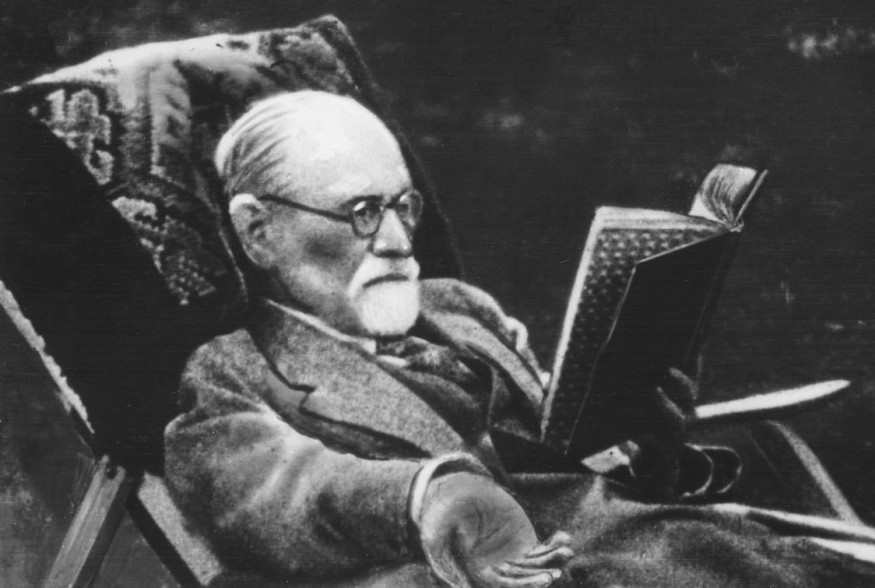
In light of Freud’s troubled relationship with Amalie, her difficult and narcissistic behavior, and her depression following Julius’s death, Freud’s apparent idealization of the mother-son relationship is clearly more complicated than the received interpretation would have us believe. In a well-known line, Freud states that the mother–son relationship “is altogether the most perfect, the most free from ambivalence of all human relationships.”[16] (Late in life, and with good reason, Freud corrected him- self and asserted that the relationship to one’s dog constitutes the most unambivalent one that can be achieved in civilization.) Readers have generally taken this to mean that it constitutes a self-contained, reciprocal, and incomparably gratifying relationship – the only relationship in civilization that is free from mutual hostility. And to the extent that he needed to idealize his relationship with Amalie, Freud would have preferred that interpretation as well. The sentence preceding that famous description, however, indicates another side to the story: “A mother is only brought unlimited satisfaction by her relation with her son.” Rather than referring to a reciprocal mother–son relationship, Freud appears to be referring only to the mother’s love for the son and what she gains from it.[17] There are many types of love, and viewed in this light, the son is indeed loved by his mother, but loved as a narcissistic object. “Freud’s oft-quoted remarks on the mother–son relationship,” Krüll argues, are not “happy reflections on maternal love,” as they are usually taken to be, “but rather . . . wry comments on maternal exactions.” She maintains that “when he called the mother–son relationship ‘free from ambivalence,’ Freud clearly meant that it was so for the mother rather than for the son.” Amalie did not love Freud “‘maternally’ in the full sense of the word,” which is to say “unconditionally” in his own right, but only insofar as she could bask in the narcissistic glow of his talent and achievements.[18]

In his attempt to decipher the meaning of Mona Lisa’s enigmatic smile, Freud argues that Leonardo refound his mother’s imago in his model’s face and reproduced it in his painting of La Giaconda. The same can be said about Freud’s relation to Leonardo’s painting – namely, in it he refound Amalie’s face. His thesis is that the enigmatic nature of Mona Lisa’s smile results from its “double meaning.” It contains both “the promise of unbounded tenderness and at the same time sinister menace.”[19] The early mother can provide unfettered gratification as well as excruciating deprivation. Likewise, Freud’s description of the artist’s “unsatisfied” mother might also be applied to Amalie’s dissatisfying relation with Jacob: “So, like all unsatisfied mothers, she took her little son in place of her husband.”[20] And again he comments on the incomparable pleasure that mother experiences with her infant (son):
A mother’s love for the infant she suckles and cares for is something far more profound for her later affection for the growing child. It is in the nature of a completely satisfying love-relation; which not only fulfills every mental wish but also every physical need.[21]
Note again that Freud’s description of the profound pleasure that can be attained in the infant–mother relationship is one-sided; it only pertains to the mother. Furthermore, assuming that he was drawing on memories of his own childhood, his analysis of Leonardo’s relation to his mother also support’s Green’s claim that the “dead mother” theory applies to Freud – a theory which assumes that there was relatively abundant good- ness between Amalie and her son before she succumbed to depression following Julius’ death. Freud believed Leonardo’s mother had bestowed “unbounded tenderness” upon him. But her affection contained a “menace” in that it made “the privations that were in store for him” that much harder to bear.[22] A mother’s seductive smile is “sinister,” in other words, because whatever pleasure it promises and even provides cannot last, making the “privations” that follow that much more painful.
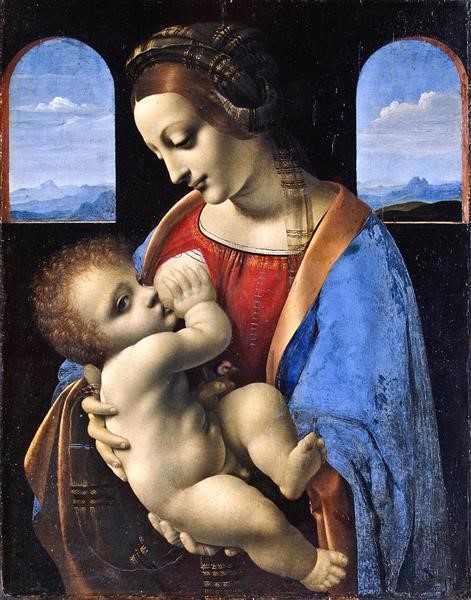
Thirst for greatness
One incident that borders on the comical demonstrates the extent of Jacob’s and Amalie’s ambition: When, like all Jews in the Empire, these two Ostjuden were compelled to choose birthdates for themselves from the Gregorian rather than the Jewish calendar, they chose Bismarck’s and Emperor Franz Josef ’s respectively.[23]79 And in another incident, Amalie took the fact that her infant was born in a caul as an indication that happiness and fame lay in his future. Indeed, she seemed to have been scanning the environment for signs that would validate her ambitions for her son. When an old lady in a pastry shop prophesied that her baby would grow up to become a great man, the superstitious Galitzianer treated this pronouncement as an unassailable prediction. Freud, however, greeted the old lady’s prediction with more skepticism: “Such prophecies must be made very often; there are so many happy and expectant mothers, and so many old peasant women and other old women who, since their mundane powers have deserted them, turn their eyes towards the future.”[24]
Amalie’s considerable grandiosity – as well as Jacob’s – undoubtedly manifested itself in her ambitiousness regarding Freud. Pondering his mother’s influence, Freud wondered, “Could this be [a] source of my thirst for grandeur?” He observes that this sort of early maternal idealization can in fact result in success in later life, and tells us that he has found that people who know that they are preferred or favoured by their mother give evidence in their lives of a peculiar self-reliance and an unshakeable optimism which often seem like heroic attributes and bring actual success to their possessors.[25]
Even if it were clear that Freud is referring to himself in this and other, similar passages – and it is not – Amalie’s idealization of her goldener Sigi is more complicated and less benign than the description appears to suggest. It is in fact shot through with contradictions that correspond to numerous contradictions in Freud’s thoroughly polytropic personality. On the one hand, there can be little doubt that internalizing the early idealizing love that Freud received from Amalie, as well as from his father and his nursemaid, played an essential role in forming the solid parts of Freud’s personality – his strengths – without which his ability to endure extreme adversity and to realize his monumental achievements would be unthinkable. On the other hand, in addition to its positive effects, Amalie’s intense (over-)investment in her son also contained an extremely narcissistic side that had more malignant consequences for his development.
For coexisting alongside his exceptional strengths within the structure of Freud’s self are many of the rifts and vulnerabilities that typically stem from disturbances in the early pre-Oedipal stages of development.
A conviction that he was unlovable despite the tremendous recognition he received, extreme separation anxiety and demandingness regarding his love objects, a craving for idealization, oral addictiveness, and a tendency to somatization were among them. Let us examine for example the remarks he made concerning the effects of his parents’ ambition for him. He does not refer to the self-confidence or optimism that it engendered in him but to his “thirst for grandeur,” which, like his penchant for heroism, can represent a (sometimes desperate) striving to repair serious defects in one’s self. Uncertainty about being loved often fuels the narcissistic thirst for glory. In his letters to Martha, Fliess, and Jung, Freud repeatedly con- fesses his nagging self-doubts and the feeling that he is unlovable. And as Rizzuto points out, “In spite of the fact that his mother obviously favored him and regardless of his assertion that favored sons are optimists, Freud was prone to pessimism.”[26]
The picture seems to be this: To the extent that Freud could identify with and internalize his mother’s idealizing love – as well as his father’s and his nursemaid’s – he was able to maintain his self-confidence in the face of deep doubts and extreme adversity. But insofar as he sensed that Amalie’s love was narcissistic and that her kvelling (gushing) over him was hollow, these identifications and internalizations were precarious, and his sense of self tended to be vulnerable and brittle. His prodigious but costly capacity for self-mastery, however, often allowed him to mask these vulnerabilities. It may be the case, moreover, that in Freud, as in many other remarkable people, these radical contrasts in his personality helped to engender a creative character structure.
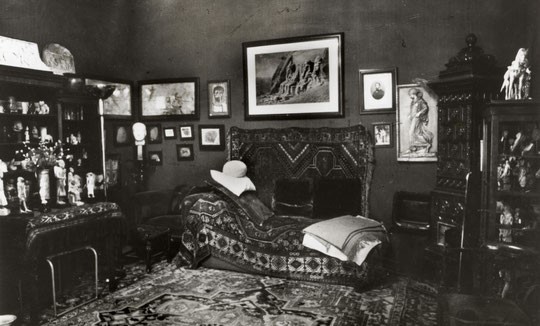
“The Original Catastrophe”
Freud’s representation of the maternal imago was further complicated by the fact that he had a “second mother”: a Czech Catholic nanny, the Kinderfrau who cared for him for the first two and a half years of his life.[27] We cannot be certain to what extent Amalie relied on the Kinderfrau prior to Julius’ death, although it is safe to assume, given the stress she must have been undergoing and her lack of experience in caring for an infant, that it was relatively extensive. Once Julius died, however, it is clear, as Harry Hardin, an expert in early maternal loss, maintains, that the Czech nursemaid became Sigmund’s “sole caretaker” – a position she retained until she abruptly disappeared six months later.[28]
Hardin argues that Freud’s Kinderfrau not only tended to his physical needs, but, after the psychological death of his mother, also became his primary source of emotional support. She became, in other words, what analysts call “a substitute object,” who replaced the mother he had precipitately lost.[29] It is important to note that the forgotten memories of the Kinderfrau emerged during the early, critical phase of Freud’s self- analysis, which he had officially undertaken in response to Jacob’s death. He had been driven into a period of intense mourning, in which many of the significant losses of his earliest years were reactivated as a result of the loss of his father. The timing of the discovery of these repressed memories indicates the important position that the Kinderfrau occupied in Freud’s psychic development. And although scant, what Freud says about her is so laden with meaning that it gives us an idea of the significance she had for him.
The continuation and end of Joel Whitebook’s “Freud’s Two Mothers” : HERE.
Joel Whitebook
Joel Whitebook is a philosopher and psychoanalyst who maintained a private practice in New York City for twenty-five years. He is currently in the faculty of the Columbia University Center for Psychoanalytic Training and Research and Director of the University’s Psychoanalytic Studies Program. He is the author of Perversion and Utopia (1995) and numerous articles.
[1] Paul Roazen, Freud and his followers (New York: New American Library, 1974), 45.
[2] Heller, “Freud’s mother and father,” 338.
[3] Ibid., 339.
[4] Rizzuto, Why did Freud reject God?, 201.
[5] M. Freud, Glory reflected, 11–12.
[6] Cited in Paul Roazen, Meeting Freud’s family (Amherst: University of Massachusetts Press, 1993), 191. This quote is from a letter from Anna Freud to Kurt Eissler.
[7] Rizzuto, Why did Freud reject God?, 197–198.
[8] Ibid., 201.
[9] Breger, Freud, 11.
[10] André Green, “The dead mother,” On private madness (Madison, CT: International Universities Press, 1986), 149 (emphasis in the original).
[11] Ibid., 142.
[12] Ibid., 149.
[13] Green in fact presents an analysis of Freud’s early years in terms of the dead mother complex. See Green, “The dead mother,” 169–173.
[14] Ibid., 142 (emphasis added).
[15] Ibid., 151.
[16] Sigmund Freud, New introductory lectures on psychoanalysis (1933), SE 22: 133.
[17] See Krüll, Freud and his father, 118; Madelon Sprengnether, The spectral mother: Freud, feminism, and psychoanalysis (Ithaca, NY: Cornell University Press, 1990), 79–80.
[18] Krüll, Freud and his father, 117–118.
[19] Freud, Leonardo, 115.
[20] Ibid., 117.
[21] Ibid., 117.
[22] Ibid., 115.
[23] Freud, The interpretation of dreams, 192.
[24] Ibid., 192.
[25] Ibid., 398.
[26] Rizzuto, Why did Freud reject God?, 201.
[27] See Jim Swan, “Mater and nannie: Freud’s two mothers and the discovery of the Oedipus complex,” American Imago 31 (1974), 1–64.
[28] Harry T. Hardin, “On the vicissitudes of Freud’s early mothering – I: Early environment and loss,” Psychoanalytic Quarterly 56 (1988), 639.
[29] In addition to Ibid., see Harry Hardin, “On the vicissitudes of Freud’s early mothering – II: Alienation from his biological mother,” Psychoanalytic Quarterly 56 (1988), 72–86, and “On the vicissitudes of Freud’s early mothering – III: Freiberg, screen memories, and loss,” Psychoanalytic Quarterly 57 (1988), 209–223.
Notes
| 1 | Joel Whitebook. Freud. An Intellectual Biography. Cambridge University Press, UK, 2017. |

